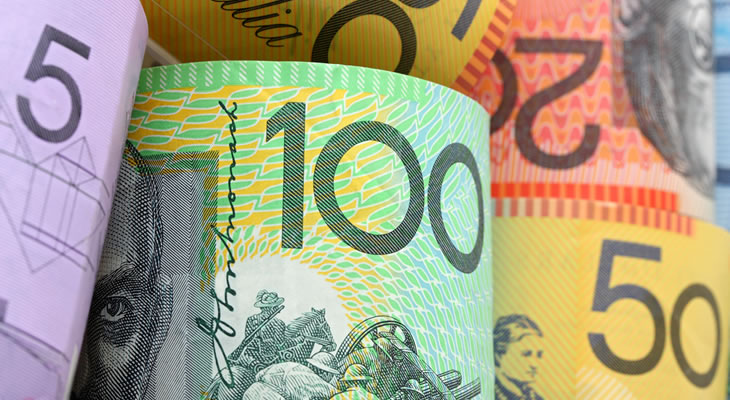- Pound (GBP) exchange rates rebound – Consolidative trade sees Sterling recover from multi-year lows
- Australian Dollar (AUD) exchange rates mixed – Standard and Poor’s cut outlook on AAA credit rating
- Market Sentiment Improves – Commodity prices and global equity markets rise
- GBP AUD exchange rate forecast to hold gains – AUD overvaluation concerns to weigh on ‘Aussie’ (AUD) demand
In response to concerns that the Sterling selloff has been overdone, the GBP AUD exchange rate advanced. However, Brexit uncertainty continues to weigh on investor confidence with many forecasting further GBP losses to come. Indeed, as the session progressed the GBP AUD exchange rate cooled from intraday highs after the NIESR Gross Domestic Product estimate revealed a marked slowdown in growth from previous quarters.
GBP AUD Exchange Rate Rebounds on Consolidative Trade
Over the past few days Sterling has tumbled consistently in light of a Bank of England (BoE) Financial Stability report which strongly hinted at the use of stimulus measures to combat the Brexit fallout.
A succession of property investment funds suspending trade, amid concerns of panic selling, also weighed on GBP exchange rates.
‘It’s reminiscent of Bear Stearns’ subprime funds before the Lehman debacle,’ stated Bill Gross, a fund manager at Janus Capital Group Inc. ‘The system doesn’t allow liquidity to flow into the proper places. If these property funds are just one indication, perhaps there will be others to follow. I think it’s something to worry about.’
Despite this, Sterling’s comparatively low trade weighting, which saw a fresh 31-year low against the US Dollar, has caused traders to take advantage of the cheap Pound. This has slowly pushed GBP exchange rates higher today.
However, domestic, economic and political conditions remain tumultuous and uncertain. This was evidenced by the latest Lloyds Business Barometer which showed business confidence dived to a 4 ½ year low.
On a more positive note, in terms of data, was May’s Industrial and Manufacturing Production which bettered estimates; showing that the uncertainty in the build-up to the EU referendum didn’t damage all of the UK’s sectoral growth.
Compared to the first quarter, when GDP grew 0.4%, the latest data ‘adds to the list of robust figures that we have seen for Q2 which suggest that, contrary to fears that GDP growth might stall in Q2 ahead of the referendum, we may actually see an improvement’ said Alan Clarke, an economist at Scotiabank in London. ‘At the moment, I’m minded to go for 0.5 percent to 0.6 percent quarter on quarter.’
GBP AUD Exchange Rate Edges Higher after Standard & Poor’s Warns of a Potential Cut to Australia’s AAA Credit Rating
Although rising commodity prices and higher global equity markets saw risk-appetite improve, the Australian Dollar endured a mixed faring versus its major peers.
A slight err towards depreciation can be linked to a warning from Standard & Poor’s that there is a one-in-three chance that Australia’s AAA credit rating could be cut.
‘The negative outlook on Australia reflects our view that without the implementation of more forceful fiscal policy decisions, material government budget deficits may persist for several years with little improvement,’ S & P said in a statement. ‘Ongoing budget deficits may become incompatible with Australia’s high level of external indebtedness and therefore inconsistent with a “AAA” rating.’
Even positive domestic data wasn’t enough to push ‘Aussie’ (AUD) exchange rates higher. June’s AiG Performance of Construction Index pushed through the 50 barrier that separates growth from contraction, rising from 46.7 to 53.2
Analyst Sam Bourgi explains why the positive construction figures had little impact in terms of boosting demand for the ‘Aussie’, stating;
‘Outside of housing and apartments, Australia’s construction industry has experienced sharp declines over the past 12 months. Commercial and engineering projects continue to falter amid a protracted downturn in the country’s mining sector. Construction in the residential real estate industry has remained on the right side of growth over the past 12 months, AiG data showed.’
GBP AUD Exchange Rate Forecast: Market Sentiment to Dictate Movement
Although the GBP AUD exchange rate posted healthy gains during Thursday’s European session, there is a good chance that the modest recovery will be short-lived.
The uncertainty rippling through the UK’s political and economic landscape continues to undermine investor confidence. What’s more, the threat of a Bank of England (BoE) benchmark interest rate cut in the near-term is likely to keep Sterling trading lower.
Meanwhile, now that it looks increasingly likely that the coalition will retain office in Australia, there is a high chance that AUD exchange rates will appreciate. This is especially true given the likelihood of US Dollar losses amid fears of overvaluation.
With that said, however, market sentiment is likely to be the principle driver of GBP AUD exchange rates. With investor confidence shaken, a return to safe-haven demand will see the Australian Dollar cool.
This would be a positive outcome for the Reserve Bank of Australia (RBA), however, as ‘Aussie’ overvaluation has been a persistent concern.
The GBP AUD exchange rate was trending within the range of 1.7150 to 1.7354 during Thursday’s European session.


Comments are closed.